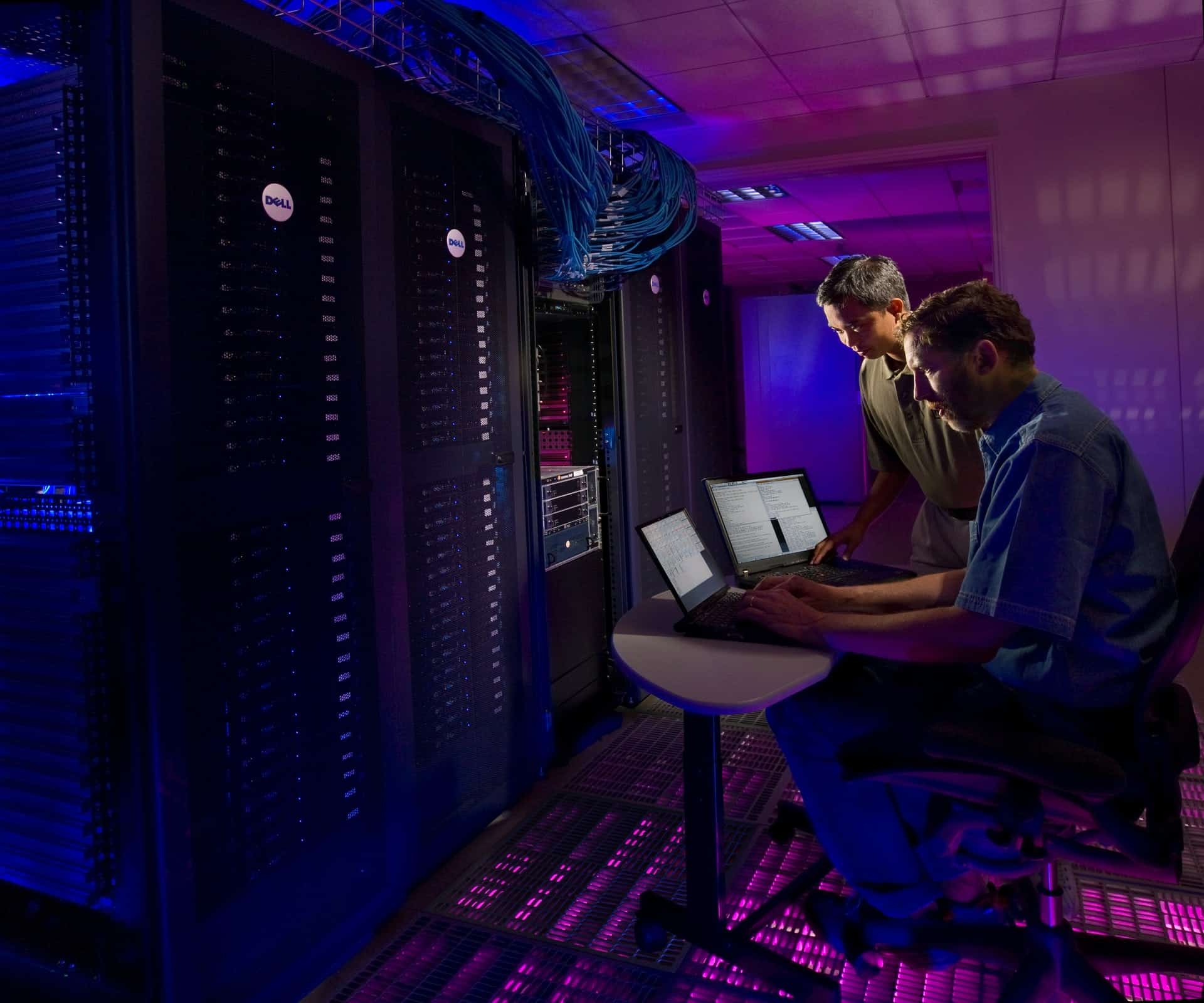
What are the Top 8 Emerging Data Storage Solutions?
September 9, 2021 - Emily Newton
Revolutionized is reader-supported. When you buy through links on our site, we may earn an affiliate commision. Learn more here.
Data has become one of the most important resources a business can have — and most companies are holding onto more information than ever, making data storage equally valuable.
This growth has made on-site storage often impractical. Other factors, like the increasing popularity of distributed teams, have also contributed to the rise of new storage solutions, such as the cloud. Now, innovative disruptions are likely to further transform how businesses store data.
These are some of the top emerging data storage solutions that enterprises are adopting right now.
1. Intelligent or Smart Storage
Some providers are beginning to experiment with data storage that learns. Smart technology leverages AI to continuously manage and respond to its environment.
In a white paper on the technology, HP describes smart storage as the use of “AI and predictive analytics to not just store data, but to assure it’s available at the place and time needed.”
In practice, the approach can lower storage operation, transfer and infrastructure costs. The system achieves this by preemptively delivering data where it’s likely to be needed and analyzing workload requirements to determine what kind of storage the organization will require. If bottlenecks and performance degradation begin to occur somewhere in a data stack, the AI system can detect and automatically work to resolve these issues.
These services can also be useful in supporting security operations and assisting an IT team in keeping cloud data protected from digital threats.
Businesses wanting to reduce operational costs or automate some of their cloud data management should investigate this option.
2. Container-Native Storage
Container-native storage, also called cloud-native storage, is a storage system that is software-defined and runs in a container. They are similar to virtual machines but are lighter weight, having only what is necessary to support and manage containerized software.
This approach works without any hardware dependencies and can be transported from device to device. This makes it compatible with a wide range of storage hardware and ensures consistent performance.
Container-native storage is becoming increasingly popular as enterprises adopt multi-cloud storage. It makes it easier to move workloads between on-premises and cloud solutions, as well as from one cloud storage system to another.
3. Edge Networking and Storage
Edge computing is a strategy for data management that moves information away from the cloud and closer to its source. Often, these are smart devices considered to be “on the network’s edge,” like IoT sensors or self-driving cars.
Moving this data back to edge devices reduces the amount of work required in the cloud, lowering a business’s storage and processing power needs. More importantly, it can also improve edge device performance by reducing the latency of data analysis. If inspections can be performed on a device, it won’t have to wait for a response from the cloud to take action.
For devices that rely on processing heavy real-time data analysis typically sent to the cloud, like self-driving cars, this can enable faster responses and better performance.
One disadvantage of the approach is that it scatters critical data throughout the network. This could make information harder to secure. However, it will likely be necessary for high-stakes situations requiring extremely low latency for proper device function.
Businesses that manage a large network of smart devices may want to consider edge storage to improve latency and performance.
4. Multi-Cloud Storage Solutions
Multi-cloud systems enable businesses to store their data across multiple environments offered by different providers. The strategy allows a company to access other benefits while also securing the best prices available for the required storage and data access.
It also means businesses don’t have to rely on a single provider. If there’s a major outage, the company will have backup cloud storage already available.
Containerization software, like Kubernetes, will become increasingly necessary to manage these hybrid storage systems. With the right tool, it’s possible to ensure consistency in online storage, regardless of what hardware is being used.
5. Entry-Level Enterprise Flash Storage
As flash storage prices have fallen and availability has improved, many well-resourced enterprises and cloud storage providers moved away from hard disk-based systems. Now, flash storage has become so cheap and efficient that even smaller businesses can switch to these systems.
This means flash storage is likely to become the norm within the next few years. Cloud storage providers and organizations that continue to store data on-site will likely make the switch if they haven’t already.
The storage protocols that hardware manufacturers use are also changing. Nonvolatile memory express (NVMe) was first released in 2013 but has become popular over the past few years as an alternative to protocols like SCSI (SAS).
While SAS currently dominates in terms of exabytes of storage shipped and likely will continue to be the popular choice, the NVMe storage protocol offers significant advantages in latency reduction and high performance. These benefits may encourage enterprises already invested in SAS SSDs to make the shift.
6. Zoned Storage
Zoned storage devices divide their space into zones. This allows developers and architects to intelligently place data on a drive and optimize for better performance and improved density. In practice, these benefits also mean a more predictable quality of service and reduced storage costs.
Zoned storage is already becoming popular in shingled magnetic recording (SMR) technology, introduced recently into the HDD market. This data management approach achieves a higher density of recording and makes the drive more efficient.
The NVMe organization is beginning to standardize a similar approach for SSDs and zoned namespaces (ZNSs).
In practice, these zoned storage techniques could be of significance for organizations with on-premises storage and cloud storage providers.
7. Hyperconverged Storage
Part of an approach called hyperconverged infrastructure (HCI), hyperconverged storage is the bundling of storage, compute, network and virtualization into a single unified system.
Virtualization software abstracts and pools cloud resources, then dynamically allocates those resources to VMs or containerized software.
In place of legacy hardware, the hyperconverged infrastructure provides enterprises with flexible building blocks they can use to meet their storage and cloud computing needs. The approach can reduce or eliminate some of the pain points associated with legacy infrastructure, including the complexity and cost of maintaining these legacy systems.
The approach can also help make a hybrid or multi-cloud approach more practical.
8. Resilient Storage
As businesses come to rely more on data, failure is becoming more disruptive. Enterprises want data storage systems that are highly resilient and built to withstand things like drive failures.
RAID, the traditional data storage virtualization technology, is being replaced by tech that makes drives more reliable.
For example, newer, more advanced erasure codes can configure a 10-stripe drive to withstand four drive failures. These codes can also run across multiple geographies, protecting data even if entire centers are lost.
How Data Storage Is Likely to Change
The growing demand for data storage will reshape the industry over the next few years. Enterprises need more storage and computing power than ever, and existing solutions come with pain points many businesses are ready to leave behind.
Intelligent storage, containerization and new storage protocols will likely have the most significant impact on data storage soon. Businesses that use a large number of edge devices may also need to consider edge computing and storage, especially if those items rely on real-time data and analysis to function correctly.
These emerging data storage technologies hold a lot of promise for keeping information secure and providing peace of mind.
Revolutionized is reader-supported. When you buy through links on our site, we may earn an affiliate commision. Learn more here.
Author
Emily Newton
Emily Newton is a technology and industrial journalist and the Editor in Chief of Revolutionized. She manages the sites publishing schedule, SEO optimization and content strategy. Emily enjoys writing and researching articles about how technology is changing every industry. When she isn't working, Emily enjoys playing video games or curling up with a good book.




